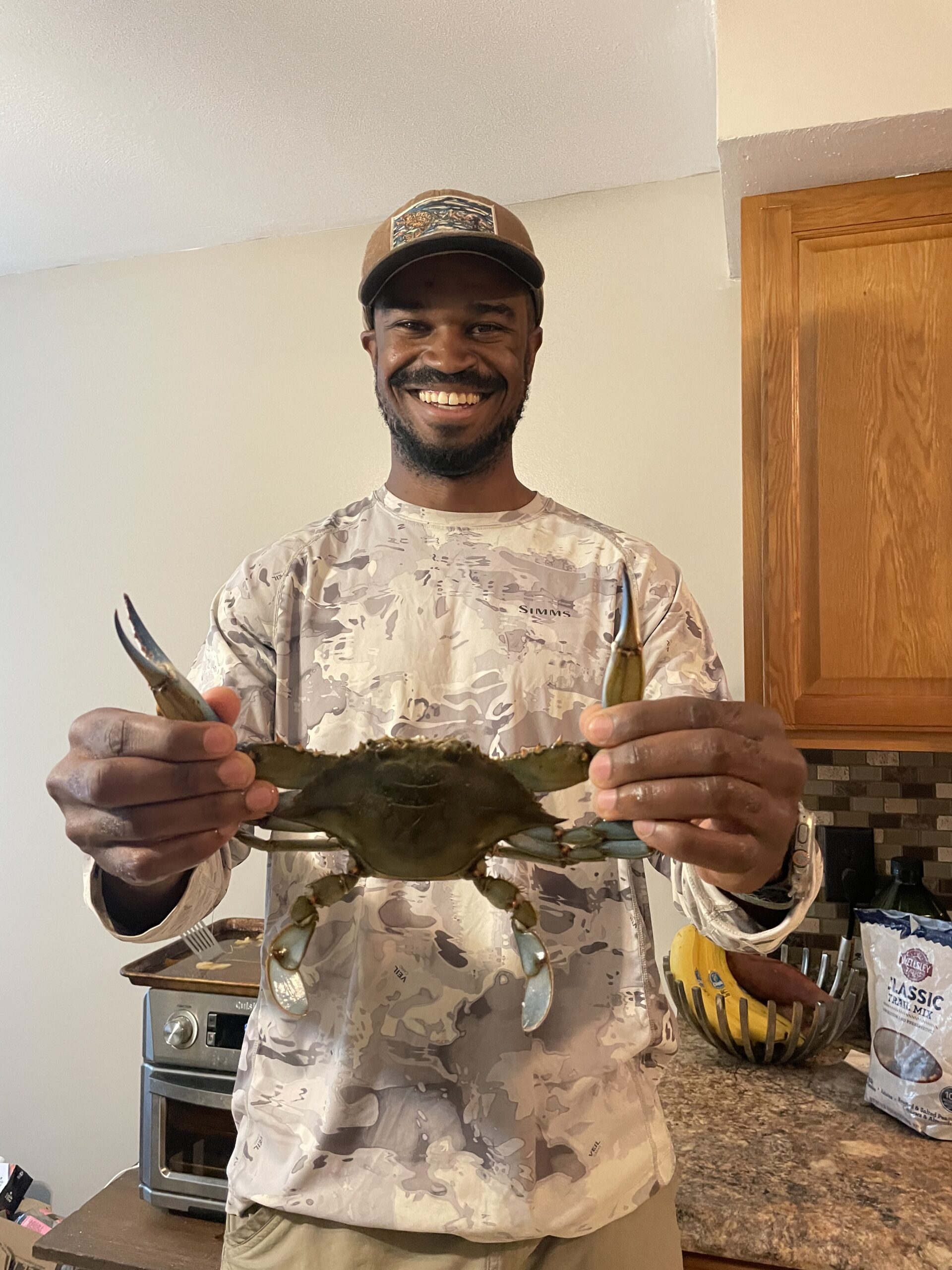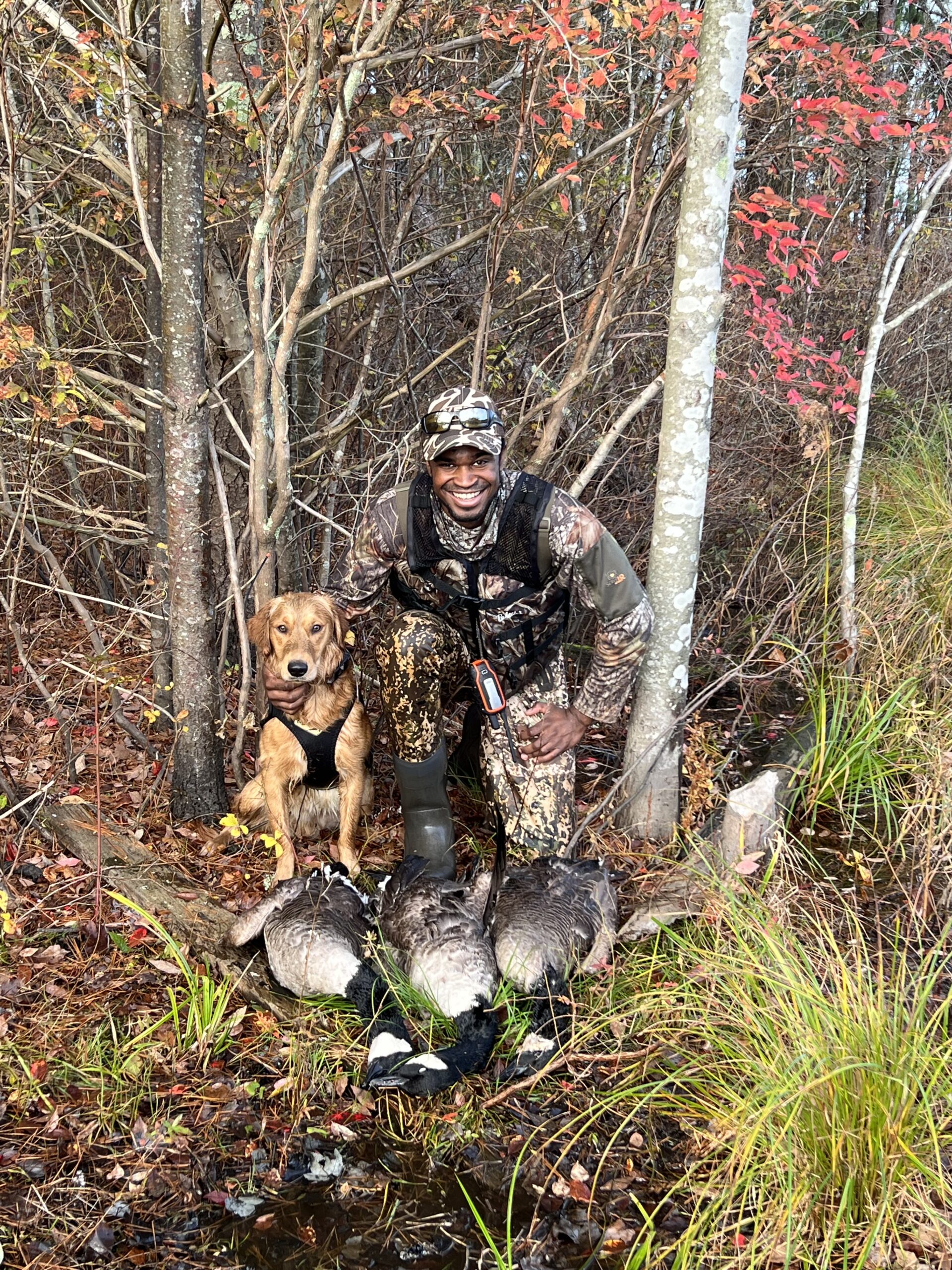I was going to start by complaining but then I realized my day wasn’t so crabby.
Ok, I am sorry, sometimes the dad jokes just flow, but let me tell you about the easiest way to catch crabs. I love everything about crabs including their life cycle, behavior, and of course on a dinner plate paired with butter and sauce. According to my parents, my fascination with crabs has always existed. In fact, as the tale goes, the first time I ever ate crab I started dancing.
You get the picture, and I think there are a lot of people out there just like me who love to eat crab prepared in a variety of ways. Since I was always so enamored with what was below the surface, I have vivid memories of dragging my aunt to the pier so I could drop a crab pot, but it was not until recently that I discovered the handlining method. Handlining is the easiest way to catch crabs and eliminates the need for bulky gear. I tend to focus on blue crabs, but this method will work with any crab that may reside in the shallows.
Necessary Gear
Handlining is simply the capture of crabs using line or rope, bait, and a net. The beauty of handlining lies in its simplicity.
My preferred line is either fishing line with 20 pound test or a small-diameter nylon line. Crabs are not shy so you do not need to be worried about spooking them with thick line the same you would fish. Bait can vary, but I like to use chicken legs and quarters because they are cheap and easy to tie onto your line. However, you can use chicken necks, fish heads, or just about any other smelly offering that you can tie onto your line. I prefer chicken with skin on because it gives the crabs something to pick at for an extended period of time.
In addition to your line, you will need a net to scoop your crabs. Get something that does not have small holes and that will not be easily sliced by crab claws. Nylon net mesh is not advisable because it is easy for crabs to get tangled. I prefer rubber mesh. The net will also need to be long enough to reach into the water from an elevated surface. Any net over approximately 36 inches will accomplish what you need.
Setting Up
Handlining crabs first appealed to me because it is inherently more active than passively dropping a crab pot. I enjoy the feeling of truly fishing for crabs rather than coming back 24 hours later to see what I caught. Handlining is a relatively shallow water game. It can be done off docks, beaches, and in estuaries. The water needs to be shallow enough so that the crabs will not let go of the bait when they are being pulled up but deep enough to be suitable habitat. I tend to focus my efforts in areas with water between one and five feet deep.
Start by identifying a spot to set up shop. Depending your target species this may vary but crabs will generally be congregated in areas with plenty of hiding spaces (think rocks and crevices). Many shallow-water crabs in the northeast also prefer a sandy bottom. Once I identify a likely area, I tie my bait to multiple lines and toss them in. When fishing multiple lines, be sure to space them out. Crabs have great senses of smell and so spacing out your bait will only increase the range of crabs you are reaching. If you place your lines too close, you run the risk of attracting all the crabs from one area.
Fishing Your Lines
Let your bait soak until you start to see the line go tight. Crabs will often try to take your bait back to their hiding spot, or at least away from other crabs which will make for a fun push and pull when it is time to bring them in.
With the line tight, you can start to slowly pull the line in. After a couple crabs you will get a good feel for a speed, however to start you cannot go slow enough. Bringing the line in too fast will cause crabs to let go. If a crab does happen to let go, leave the bait where they let go. Sometimes, crabs will immediately grab your offering again. You won’t need to go so slow that it takes too long to bring the crabs in, but keep in mind that the faster you go, the more crabs you will lose.
When your bait gets close, you or your partner can grab your net. Slowly lower the net into the water parallel to your catch. Sometimes crabs will refuse to come off the bottom. In these instances, continue to slowly pull them until they hold onto the suspended chicken or are close enough for you to scoop them right off the bottom. If they are suspended you can simply scoop under them and pull them out of the water. Scooping off the bottom involves an all in one motion in which you place your net on the seaward side of the crab and scoop everything – including the ground – back towards you. In this way you can get under the crab and flip the net to make sure they end up being caught.
Storing Your Catch
Make sure you are up to date with your local crabbing regulations and ensure all crabs are of the correct size and sex for harvest. You can store your crabs in a cooler with a bag of ice underneath them. Be sure to leave the ice in the bag so your crabs do not end up in standing water. The ice will cause the crabs’ metabolism to slow but it will not kill them. This will allow you to keep them alive until you are ready to cook them. It is imperative that your crabs stay alive until you can cook them because raw crab meat begins to spoil quickly if not properly stored.
Conclusion
Crabbing is a great way to get out and enjoy the summer when standard fishing is slow. It is also very social because it is most fun when done with a group or with a partner. Not to mention the reward of working a little harder for your crabs is excellent. I can tie my harvest of crabs back to specific stories of interesting behavior I observed when fishing for them. There is not much better than that.












